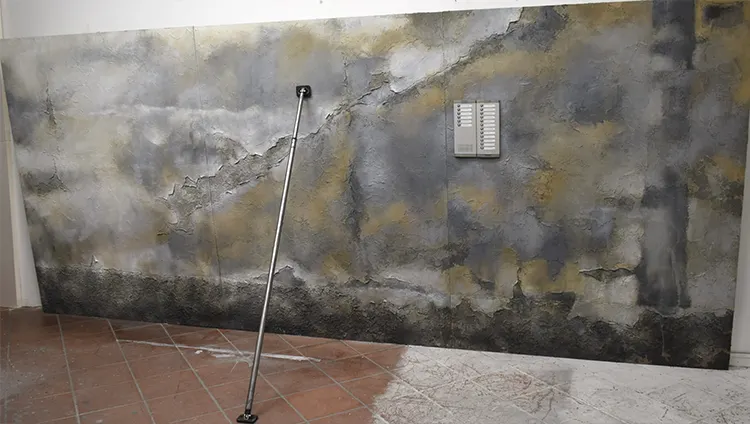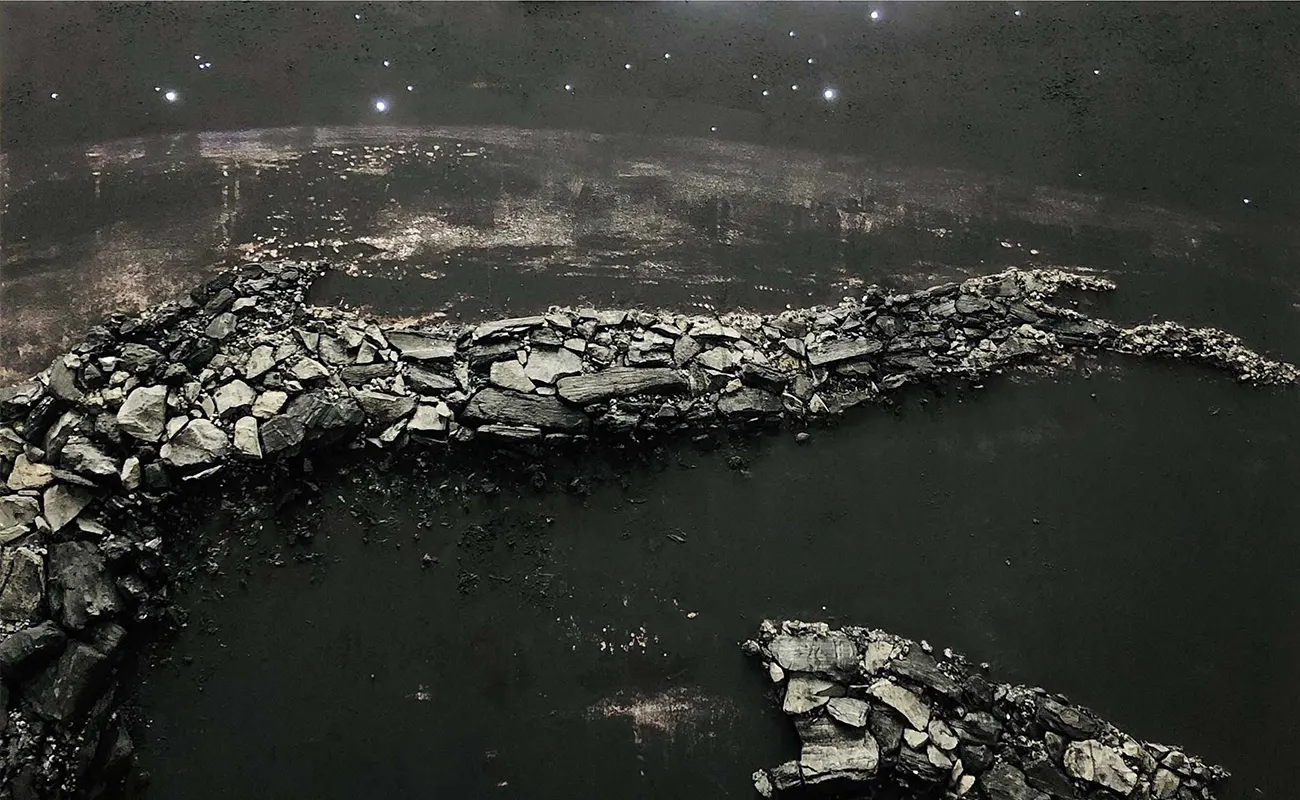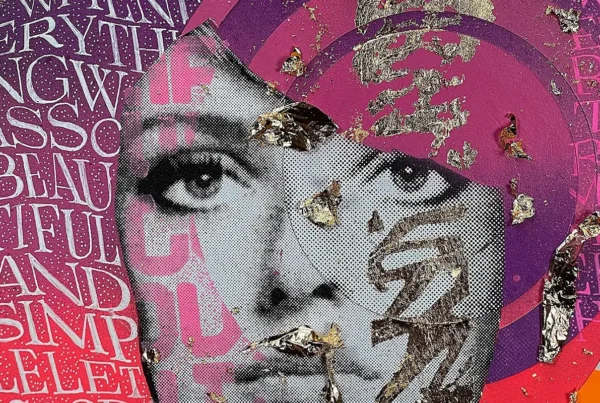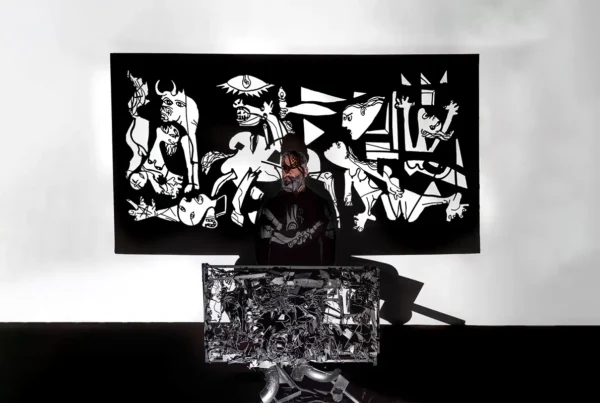“I am convinced that the work of art should ask questions rather than give answers.”
Art as an Inquiry into the Human Condition
Carlo Caldara‘s artistic journey is defined by an unrelenting exploration of existence, identity, and the passage of time. His work, spanning painting, sculpture, installation, and photography, is infused with existential questions that seek to redefine humanity’s place in the world. By merging symbolic references with raw materials, he crafts visual narratives that challenge perception and evoke deep contemplation. The interplay between permanence and impermanence is central to his artistic inquiry, as he navigates the delicate balance between materiality and the ephemeral nature of life.
Born in Milan in 1969, Caldara initially pursued medicine while simultaneously studying at the Academy of Fine Arts of Brera. This dual path shaped his approach to art, embedding a scientific awareness of human fragility into his creative process. His works incorporate an array of materials—charcoal, cement, gauze, stones, LED lights, and mirrors—each chosen for their capacity to embody the transience of existence. Concrete, in particular, with its abrasions and wear, becomes a testament to time’s relentless passage. By integrating everyday objects and unconventional textures, he constructs layered compositions that transcend traditional artistic boundaries.
Caldara’s practice does not seek to provide answers but rather poses questions. His installations, often monumental in scale, disrupt conventional perspectives, compelling viewers to engage in an introspective dialogue. His use of light, shadow, and reflective surfaces amplifies the tension between presence and absence, permanence and decay. Through these elements, he creates immersive environments that draw attention to the fleeting nature of reality, inviting audiences to reconsider their relationship with time and memory.
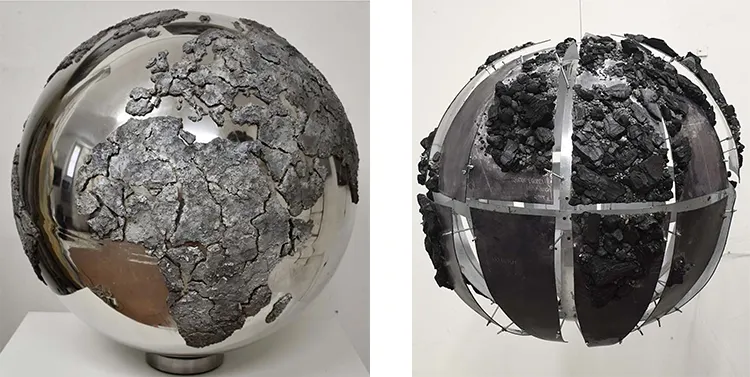
Carlo Caldara: Between Light and Transience
A recurring theme in Caldara’s work is the dynamic interplay between light and transience. These opposing yet interconnected forces serve as metaphors for knowledge and impermanence, guiding his artistic expression. Light, often associated with revelation and understanding, illuminates the fragility of existence, while transience underscores the inevitability of change. Through this contrast, Caldara articulates a vision of life that is both introspective and universal, mirroring philosophical notions of being and time.
His recent exhibition, Licht und Vergänglichkeit (Light and Transience), at Benjamin Eck Gallery in Munich, encapsulates this duality. Drawing inspiration from thinkers like Martin Heidegger, Caldara explores the concept of Sein-zum-Tode (“being-for-death”), which emphasizes the significance of mortality in shaping human experience. In this context, his art becomes a meditation on the passage of time, urging viewers to confront their own finitude. By utilizing reflective materials such as mirrors and LED lights, he creates immersive spaces that blur the boundaries between reality and illusion, prompting existential introspection.
In Licht und Vergänglichkeit, Caldara extends his investigation into the tension between the eternal and the ephemeral. His works trace the fluidity of existence, capturing fleeting moments as luminous experiences that resist permanence. The exhibition underscores his ability to translate abstract philosophical inquiries into tangible artistic forms, where each material choice reinforces the fragility of the human condition. As light exposes and transience erodes, Caldara’s creations remind us of the impermanence that defines our world.
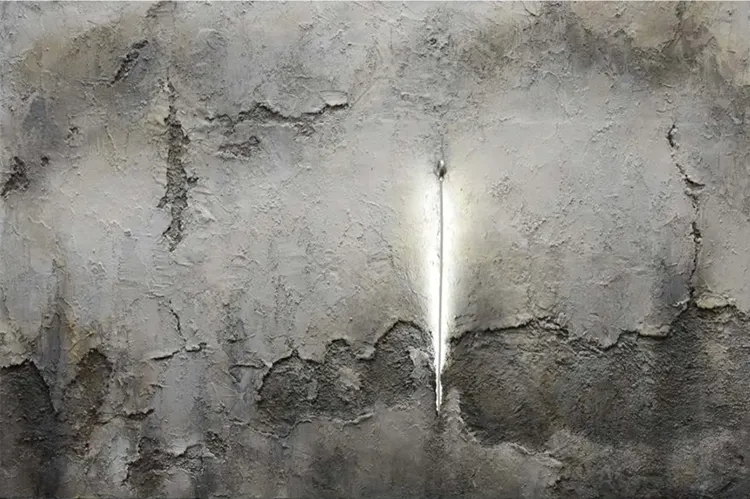
Monumentality and Memory in Caldara’s Installations
Caldara’s installations are distinguished by their monumentality, yet they carry an inherent sense of vulnerability. His work WE’LL BE THERE (2023) exemplifies this contrast, standing as both a physical structure and a poignant social commentary. The piece—a crumbling wall with an intercom, precariously supported by a prop—bears the names of Iranian students who lost their lives under an oppressive regime. When viewers press the intercom buttons, they hear the sound of a bell, evoking a haunting sense of loss and remembrance.
This work embodies Caldara’s belief that art should provoke thought rather than provide definitive answers. The juxtaposition of concrete, polystyrene, metal, and wood emphasizes the fragility of historical memory. The wall, seemingly on the verge of collapse, serves as a metaphor for the precariousness of human rights and the persistence of voices that refuse to be silenced. By embedding political and social narratives into his installations, Caldara transforms his art into a space of reflection and resistance.
Another defining aspect of his work is his ability to merge materiality with symbolism. In his sculpture What Remains of Dreams, a cement head with illuminated fractures becomes a visual meditation on resilience and vulnerability. The glowing fissures suggest that even in brokenness, there is light—perhaps a metaphor for the way dreams and aspirations continue to shape reality despite life’s hardships. Through such pieces, Caldara asserts that art is not merely an aesthetic pursuit but a profound engagement with the complexities of existence.
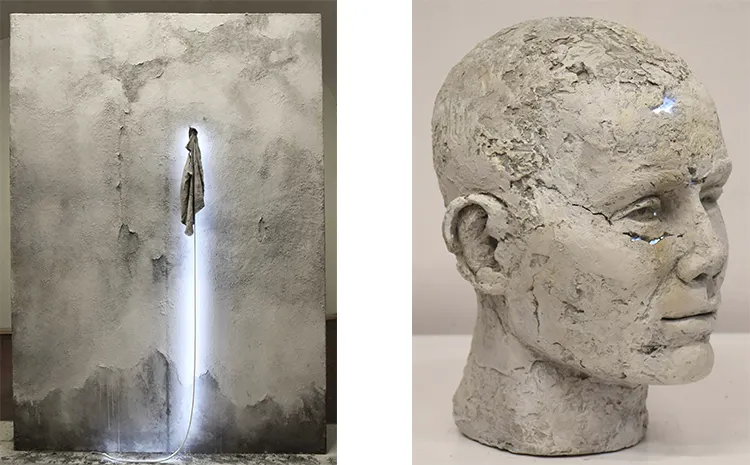
Carlo Caldara: The Evolution of an Experimental Vision
Caldara’s artistic evolution has been marked by continuous experimentation with form, material, and meaning. Though he began as a painter, his inclination toward unconventional techniques led him to burn canvases, incorporate industrial materials, and integrate photography with sculpture. This restless approach reflects his commitment to pushing artistic boundaries, ensuring that his work remains fluid and ever-evolving. His large-scale projects often redefine spatial relationships, creating immersive experiences that shift the viewer’s perception of reality.
Throughout his career, he has participated in prestigious exhibitions, including the Venice Biennale, where he showcased works such as MEMORY WAYS, a large globe reflecting on collective consciousness. His installations at the Guatemala Pavilion and the Milan Triennale further attest to his international recognition. His ability to weave philosophical thought into visual expression has garnered critical acclaim, positioning him as an artist whose work resonates across cultures and disciplines.
Caldara’s artistic philosophy is rooted in the belief that art should incite curiosity and self-reflection. His use of polymer cement, metal, and organic materials is not merely an aesthetic choice but a deliberate effort to embody the passage of time. His works serve as repositories of memory, confronting viewers with the transient nature of existence. Whether through large-scale installations or intimate sculptures, Caldara continues to redefine contemporary art’s relationship with space, time, and human experience.
